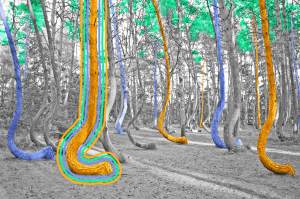
Numbers Don't Lie

The NFL’s Buffalo Bills are named after the famous frontiersman ______.

Ready to reveal?
Confirm your email to play the next question?

The NFL’s Buffalo Bills are named after the famous frontiersman Buffalo Bill Cody.

The marathon’s exact distance, 26.2 miles, is because of the British royal family.
The marathon race’s well-known ancient origins date back to the fifth century BCE, but today’s 26.2-mile length is a much more modern invention. An ancient legend states that in 490 BCE, an Athenian messenger named Pheidippides ran from Marathon to Athens to deliver a one-word message regarding the outcome of the city-state’s battle with the Persians: “Nike” (meaning “victory”). After running 25 miles nonstop, Pheidippides allegedly died from exhaustion. Some 2,400 years later, the 1896 Olympic Games in Athens commemorated this moment in Greek history by establishing a nearly 25-mile marathon run. However, 12 years later, during the 1908 London Olympic Games, that historic 25-mile distance didn’t quite line up with Britain’s plans. The story goes that Princess Mary (Mary of Teck), wife of the future King George V, requested that the race begin on the lawn of Windsor Castle (so the young royals could see it) and finish at the royal box at the Olympic stadium. This request, along with other route complications, extended the race from 25 miles to exactly 26 miles and 385 yards — roughly 26.219 miles. (An alternate telling of these events says that the private location for the start of the marathon was meant to help with crowd control and minimize public interference.) The London length became the standard when the International Amateur Athletic Federation set the official marathon distance at 26.2 miles in 1921. Today, that seemingly random mileage remains the set distance for marathon races around the world.
















